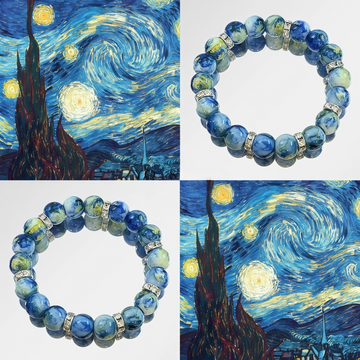Verifying the Authenticity of Certificates for Stone Bracelets: Essential Methods
When purchasing a stone bracelet, ensuring the authenticity of its accompanying certificate is crucial to guarantee the quality and value of the piece. Counterfeit certificates can mislead buyers, leading to financial losses or disappointment. Below are practical methods to verify the legitimacy of a stone bracelet certificate, helping you make informed decisions.
Checking the Issuing Authority and Credentials
The first step in verifying a certificate’s authenticity is to examine the issuing institution and its qualifications:
- Research the Institution: Look up the name of the issuing laboratory or organization online. Reliable institutions often have official websites where you can cross-reference their credentials, such as accreditation numbers or certifications (e.g., CMA, CNAS). If the institution lacks an online presence or verifiable credentials, the certificate may be questionable.
- Verify Accreditation Marks: Legitimate certificates typically display accreditation marks like CMA (China Metrology Accreditation) or CNAS (China National Accreditation Service for Conformity Assessment). These marks indicate the institution meets national standards for testing and calibration. Absence of such marks raises red flags.
- Cross-Reference Official Databases: Some countries maintain databases of accredited testing laboratories. Use these resources to confirm the institution’s legitimacy. For example, in China, the National Certification and Accreditation Administration provides a searchable list of qualified institutions.
Inspecting the Certificate’s Physical and Digital Features
Authentic certificates often include security features to prevent forgery. Pay close attention to these details:
- Security Marks and Holograms: Many certificates incorporate watermarks, holograms, or UV-reactive elements. These features are difficult to replicate and serve as indicators of authenticity. Use a UV light to check for hidden logos or patterns.
- Consistent Branding and Layout: Genuine certificates follow a standardized template with consistent fonts, logos, and formatting. Inconsistencies, such as misaligned text or blurry images, may suggest tampering or counterfeiting.
- Unique Identification Numbers: Each certificate should have a unique serial number or QR code. Scan the QR code or enter the number on the issuing institution’s official website to verify the certificate’s details. If the number is invalid or leads to a generic page, the certificate is likely fake.
Validating the Certificate’s Content and Details
The information listed on the certificate must align with the bracelet’s characteristics and adhere to industry standards:
- Matching Stone Descriptions: The certificate should accurately describe the stone’s type, color, clarity, and carat weight. Compare these details with the bracelet’s appearance. Discrepancies, such as a mislabeled stone variety or exaggerated quality claims, indicate potential fraud.
- Adherence to National Standards: Authentic certificates reference national or international standards for gemstone identification (e.g., GB/T 16552 for jewelry nomenclature in China). If the certificate lacks these references or uses non-standard terminology, its credibility is questionable.
- Signatures and Seals: Genuine certificates bear the signatures of certified gemologists or technicians, along with the institution’s official seal or stamp. Handwritten signatures should appear authentic, and seals should be embossed or printed with high precision.
Leveraging Third-Party Verification and Expert Opinions
When in doubt, seek assistance from independent experts or laboratories to confirm the certificate’s authenticity:
- Request a Second Opinion: Submit the bracelet and certificate to a reputable third-party laboratory for re-evaluation. Compare their findings with the original certificate to identify inconsistencies.
- Consult Industry Professionals: Gemologists or appraisers with experience in stone authentication can provide insights into the certificate’s legitimacy. They may recognize common counterfeiting tactics or flag suspicious details.
- Check for Online Verification Tools: Some institutions offer online portals where you can input the certificate’s details for instant verification. Use these tools to cross-check the information provided on the physical certificate.
By following these steps, you can significantly reduce the risk of purchasing a stone bracelet with a fraudulent certificate. Always prioritize due diligence, and do not hesitate to seek professional assistance when needed. A genuine certificate not only validates the bracelet’s quality but also protects your investment for years to come.







